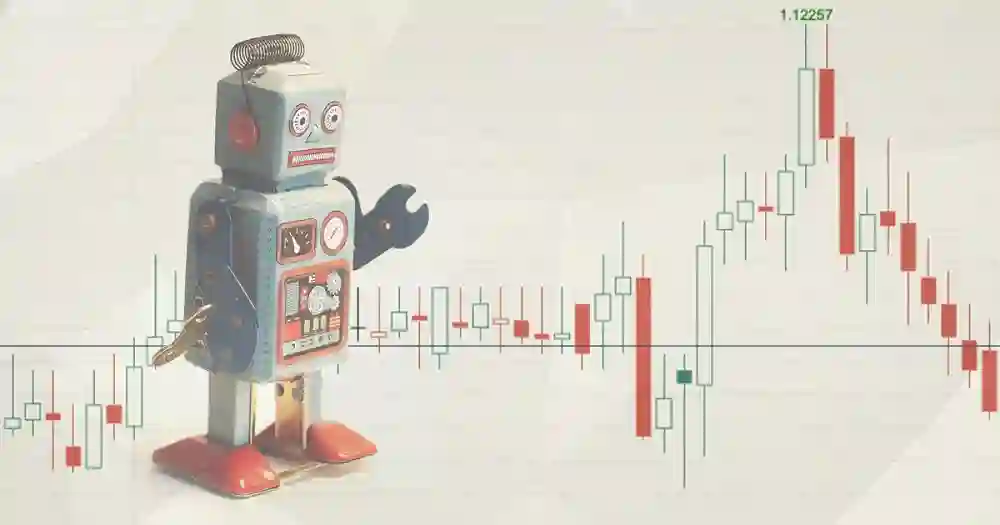In the ever-evolving landscape of forex trading, staying ahead of the curve requires the utilization of cutting-edge technologies. Deep learning, a subset of artificial intelligence (AI), has emerged as a powerful tool for analyzing complex data patterns and making accurate predictions. When applied to forex trading, deep learning algorithms enable forex robots to process vast amounts of market data, identify trends, and make informed trading decisions. In this article, we explore the potential of leveraging deep learning for advanced forex robot predictions, examining its applications, benefits, and challenges.
Understanding Deep Learning:
Deep learning is a branch of machine learning that mimics the neural networks of the human brain to process and analyze data. Unlike traditional machine learning algorithms, which rely on predefined features and rules, deep learning algorithms learn to extract features directly from raw data through multiple layers of interconnected neurons.
In the context of forex trading, deep learning algorithms can analyze historical market data, such as price movements, volume, and technical indicators, to identify patterns and trends that may influence future price movements. By training on large datasets of historical market data, deep learning models can learn complex patterns and make accurate predictions about future price movements.
Applications of Deep Learning in Forex Trading:
Deep learning has several applications in forex trading, including:
- Predictive Analytics: Deep learning algorithms can analyze historical market data to predict future price movements with high accuracy. By learning from past patterns and trends, deep learning models can identify potential trading opportunities and make informed predictions about future market trends.
- Pattern Recognition: Deep learning algorithms excel at pattern recognition tasks, such as identifying chart patterns, candlestick formations, and technical indicators. By analyzing historical market data, deep learning models can recognize recurring patterns and trends that may signal potential trading opportunities.
- Sentiment Analysis: Deep learning algorithms can analyze news articles, social media posts, and other sources of market sentiment to gauge investor sentiment and market sentiment. By analyzing text data, deep learning models can extract insights about market sentiment and incorporate them into trading decisions.
- Risk Management: Deep learning algorithms can analyze historical market data to assess risk factors and identify potential risks. By learning from past market behavior, deep learning models can anticipate potential risks and adjust trading strategies accordingly to manage risk effectively.
Benefits of Deep Learning in Forex Trading:
Deep learning offers several benefits for forex trading:
- Accuracy: Deep learning algorithms can analyze large volumes of market data and identify complex patterns and trends with high accuracy. By leveraging deep learning for forex trading, traders can make more informed trading decisions and improve trading performance.
- Automation: Deep learning algorithms can be integrated into forex robot to automate the process of data analysis and prediction. By automating repetitive tasks, deep learning models can free up traders’ time and resources, allowing them to focus on higher-level decision-making tasks.
- Adaptability: Deep learning algorithms are highly adaptable and can learn from new data and changing market conditions. By continuously updating their models with new information, deep learning models can adapt to evolving market dynamics and maintain high levels of accuracy over time.
- Scalability: Deep learning algorithms can scale to analyze large volumes of data and handle complex trading scenarios. By leveraging deep learning for forex trading, traders can analyze multiple currency pairs, timeframes, and technical indicators simultaneously, leading to more comprehensive and accurate predictions.
Challenges of Deep Learning in Forex Trading:
Despite its benefits, deep learning poses several challenges for forex trading:
- Data Quality: Deep learning algorithms require large volumes of high-quality data to train effectively. Obtaining and preprocessing large datasets of historical market data can be challenging and time-consuming.
- Model Complexity: Deep learning models can be complex and computationally intensive, requiring significant computational resources and expertise to train and deploy effectively.
- Overfitting: Deep learning models are prone to overfitting, where the model learns to memorize the training data rather than generalize to new data. Overfitting can lead to poor performance in live trading environments and reduced generalization ability.
- Interpretability: Deep learning models are often referred to as “black boxes” because they lack interpretability, making it difficult to understand how predictions are made. Traders may struggle to trust and interpret the outputs of deep learning models, leading to hesitation in adopting them for forex trading.
Case Study: Deep Learning in Forex Robot Predictions
To illustrate the potential of deep learning for advanced forex robot predictions, let’s consider a case study.
Suppose we develop a deep learning model using recurrent neural networks (RNNs) to predict future price movements in the forex market. By training the model on historical market data, such as price movements, volume, and technical indicators, we observe high levels of accuracy in predicting future price movements.
By integrating the deep learning model into a forex robot trading strategy, we observe improved trading performance and profitability compared to traditional trading strategies. The deep learning model can analyze complex data patterns and make informed trading decisions, leading to more accurate predictions and better trading results.
Conclusion:
In conclusion, leveraging deep learning for advanced forex robot predictions offers significant potential for improving trading performance and profitability. By analyzing large volumes of market data and identifying complex patterns and trends, deep learning algorithms can make accurate predictions about future price movements and help traders make more informed trading decisions. While deep learning poses challenges such as data quality, model complexity, overfitting, and interpretability, the benefits of accuracy, automation, adaptability, and scalability make it a valuable tool for forex trading. As deep learning techniques continue to advance, we can expect to see further innovations in forex trading strategies, enabling traders to achieve consistent profitability in the dynamic and competitive forex market.











This content is simply exciting and creative. I have been deciding on a institutional move and this has helped me with one aspect.